Nichols Mostly Wooden Banjo-2010
This banjo started out as a piece of maple pictured here.
Here is the piece that I copied to make both halves of this pot. I made at least 12 of these splined pieces and a couple of extra ones. Also (although not shown in these pictures) there was a third piece made similarly that serves as a base for the little brass tone ring.
These grooves are cut for some plywood splines. The splines add extra strength.
Here is one of the blanks being glued.
Here are the 2 halves of this shell. One is the main shell and the other acts as a wooden tension hoop.
Here is the shell mounted on my lathe.
Here is the back half rounded out.
Here is the piece with the ledge turned to fit the other half of the shell.
Here is the top part or tension hoop side of the shell.
Here are the 2 halves fit together.
The pot in its final shape.
Top of shell with head in place.
These round edges make me happy.
Shown here is the third piece of this shell. It floats in between the other 2 pieces and holds the small brass (Stew Mac) light weight 11 inch tone ring.
Here is that 3rd piece with the tone ring installed.
Here are the 3 pieces put together temporarily and tested with some little wedges to provide the tension for the head. I know this probably looks confusing.
The main shell and the tension hoop part are attached to each other with these screws. The floating piece that has the tone ring on it is sandwiched between these two pieces.
Here is the back or main shell after the 1/4 by 20 bolts and nuts were put into it. These bolts bear on the floating tone ring assembly and provide head tension.
Here is the tension hoop part.
This shows the head tensioning bolts. They are tightened after the two halves of the pot are together. A 7/16 inch open end wrench is all it takes to tension the head.
Here is the pot after staining and finishing. It has a different look doesn’t it? Smooth and clean looking.
Here is the back of the pot assembly. There are also some screws that go in from the sides to strengthen this assembly.
Here is the pot bolted to the neck. This neck started life as a Japanese bowtie copy banjo neck. It has now been recycled into a neck to fit this banjo. I removed the frets and radius-ed the fingerboard.
Here is the finished banjo.
The finished pot. It can be played as an open back.
It can also be played with a resonator.
I modified the resonator that went with that neck and made it so it can be attached and removed with just a tug. The resonator was modified a lot to allow this.
Here is the back of this resonator.
Here is another shot of this pot showing part of the neck.
The completed product.
The depth of this pot is only about 3 inches. It weighs about half of what a Gibson type banjo weighs. The fingerboard is raised above the plane of the head to allow for picking without picks touching the head. It has the Nichols ultra rounded edges on it.
Here is the back side of the pot.
Naturally it has a Nichols Bridge on it. It is a radius-ed maple bridge.
It also has a radius-ed fingerboard. I’m sure this isn’t for everyone. It has some features on it that I like. It has a pleasant tone and the pot not being so thick is a good feeling for me. It is part of an ongoing experiment for me.
![]()
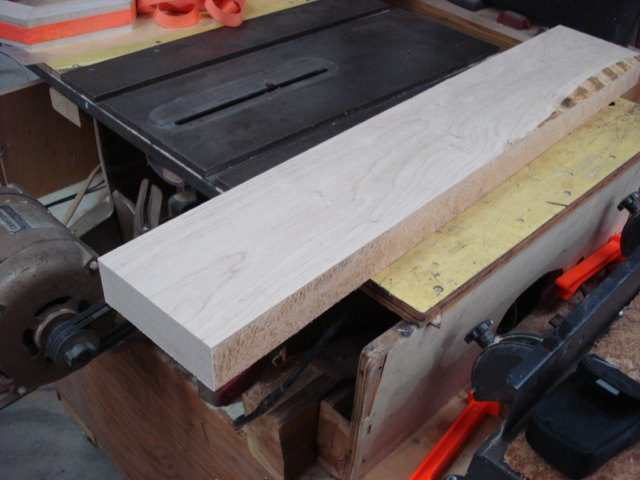
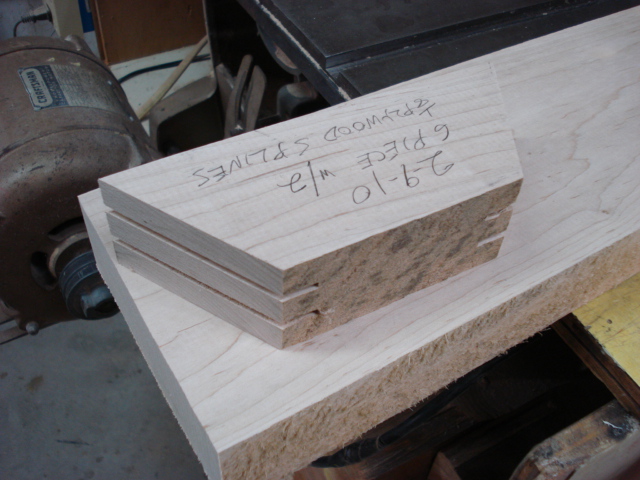
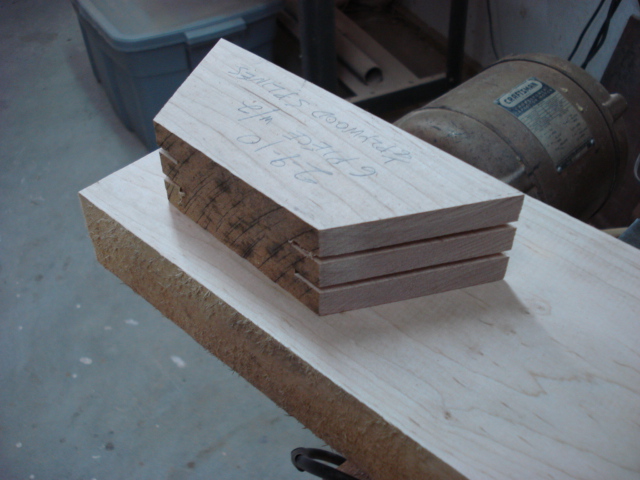
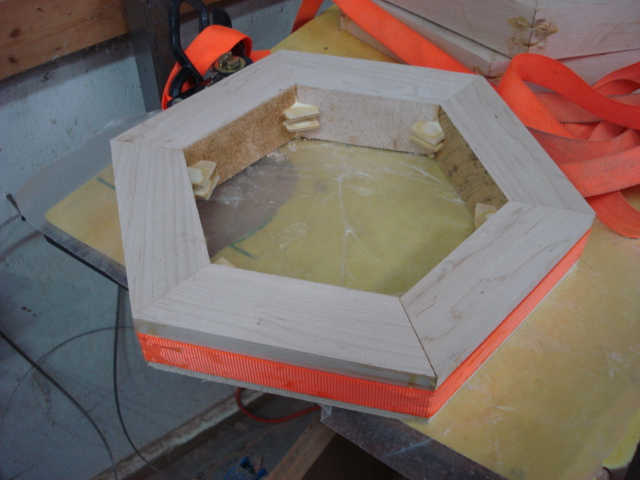
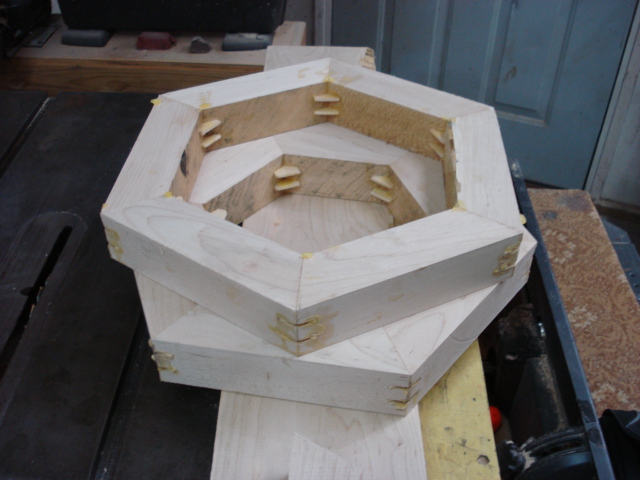
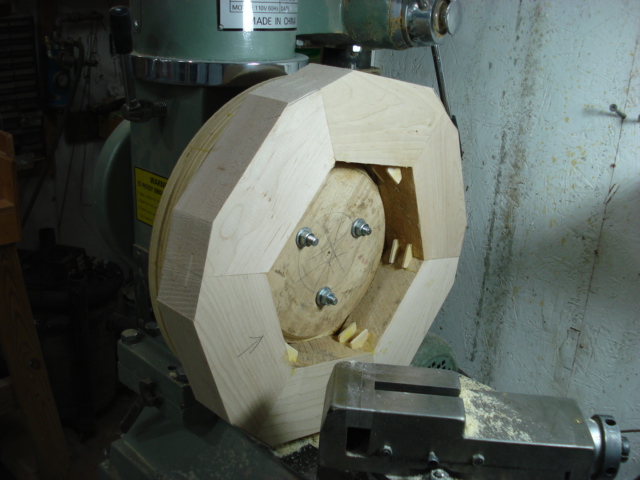
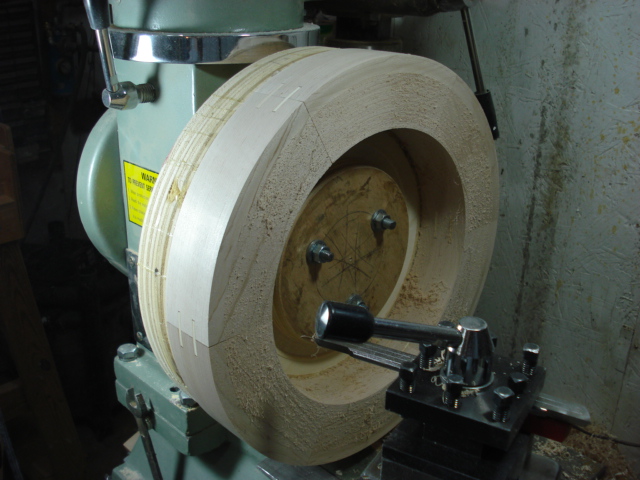
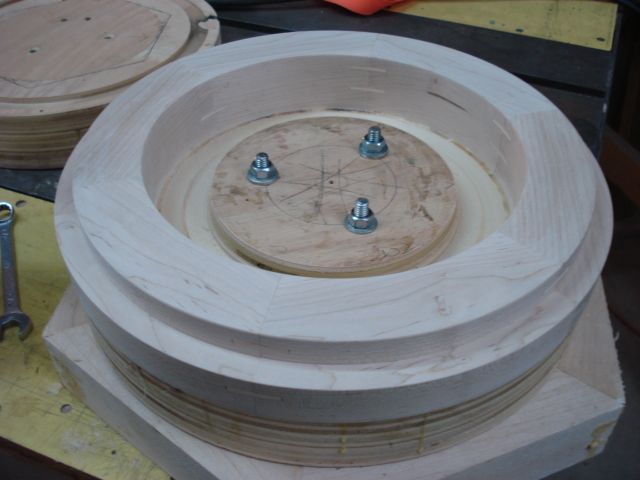
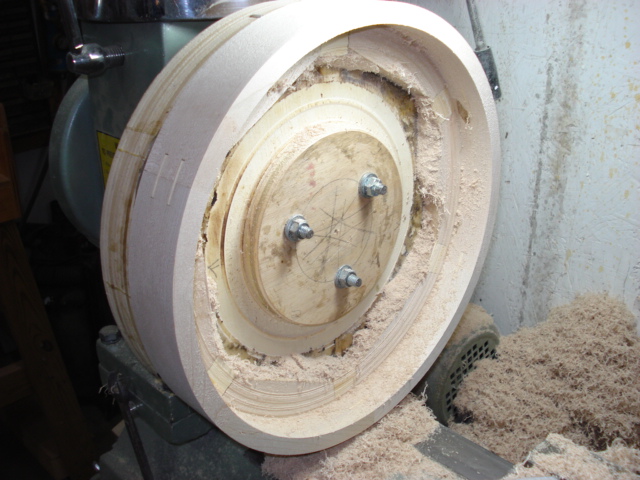
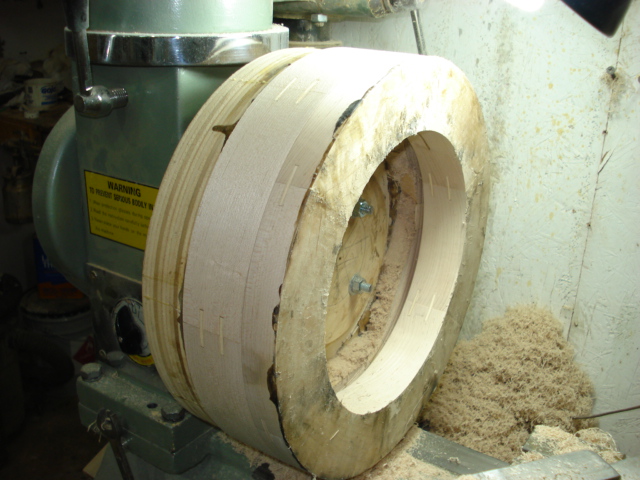
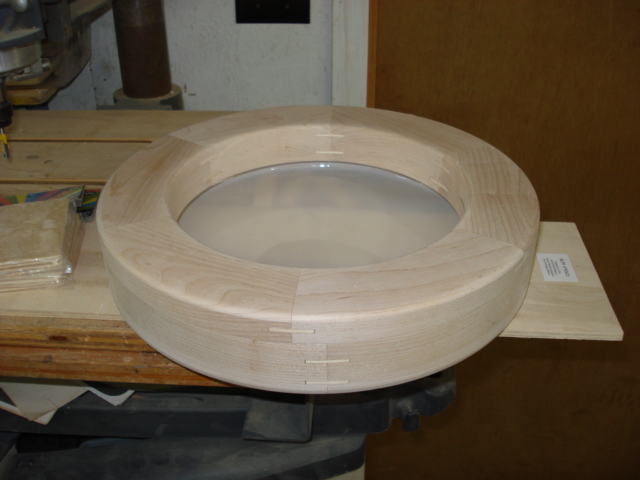
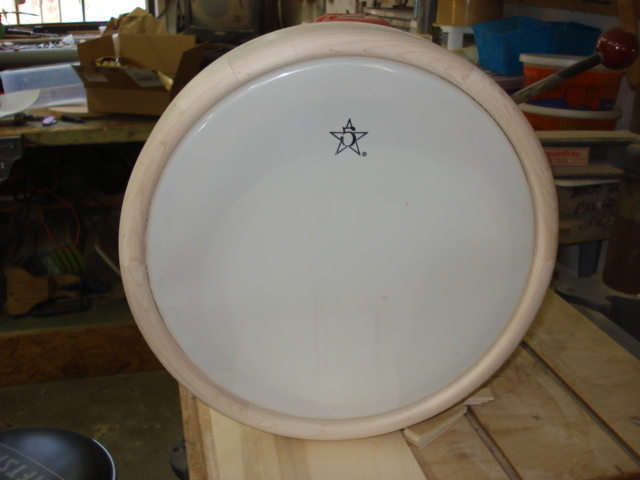
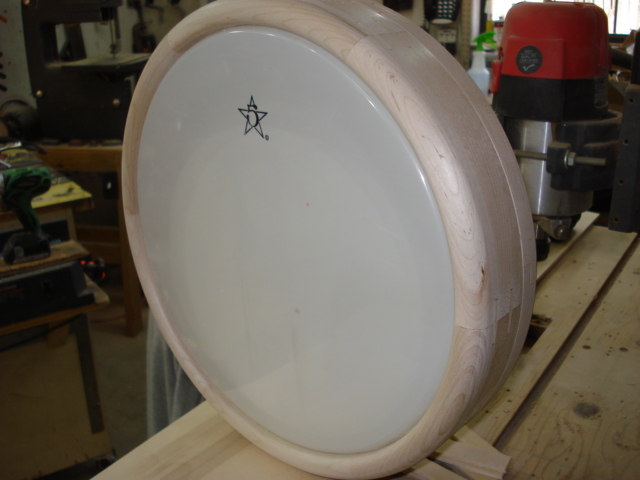
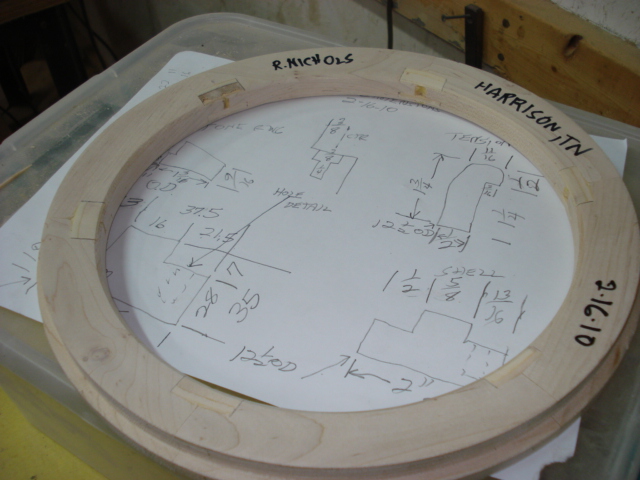
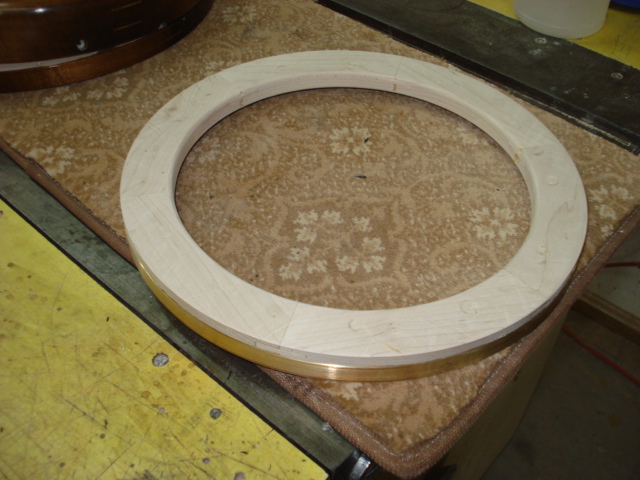
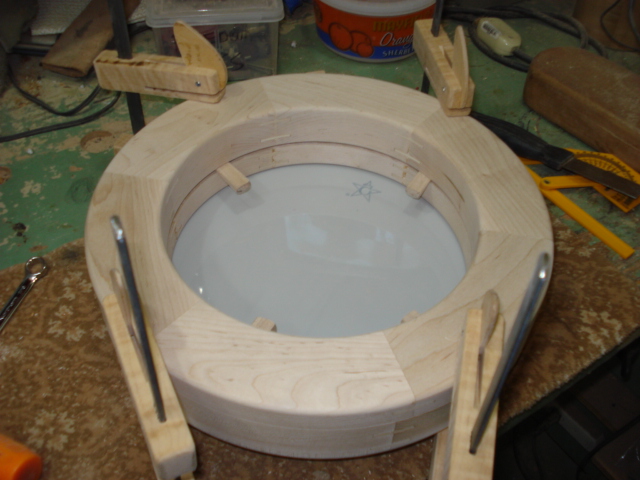
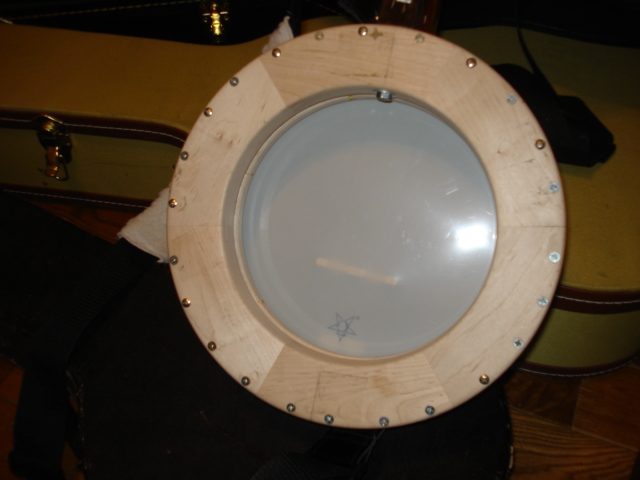
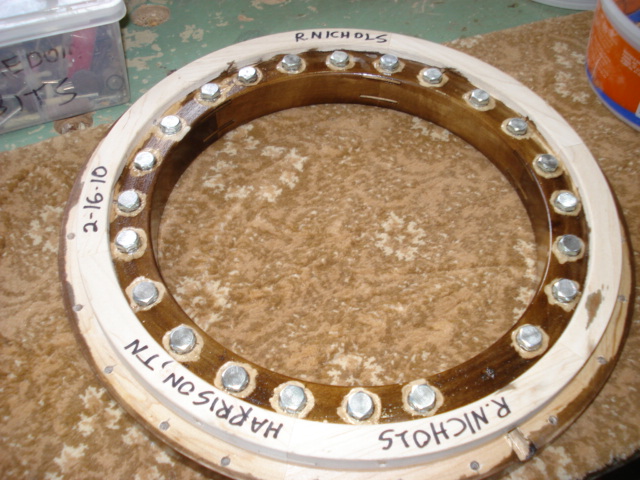
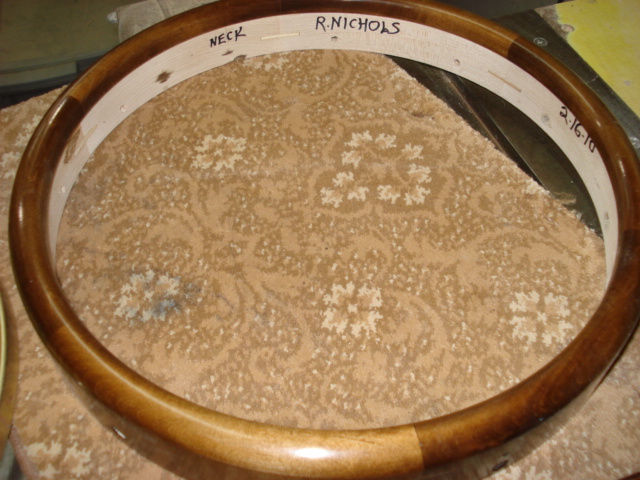
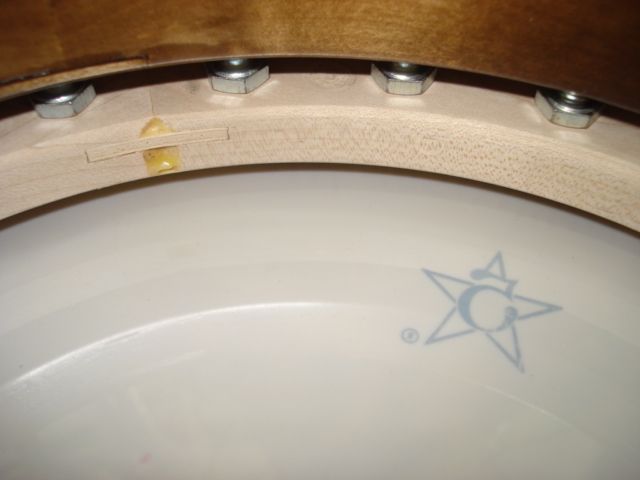
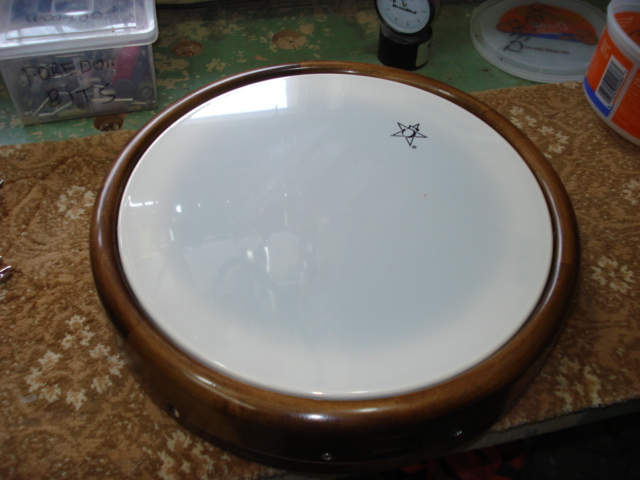
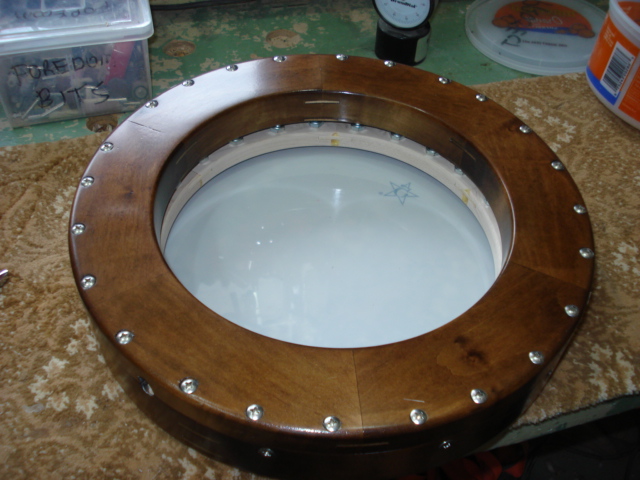
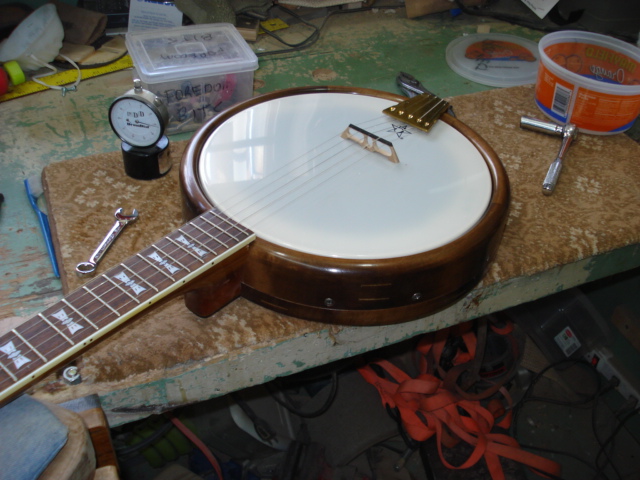
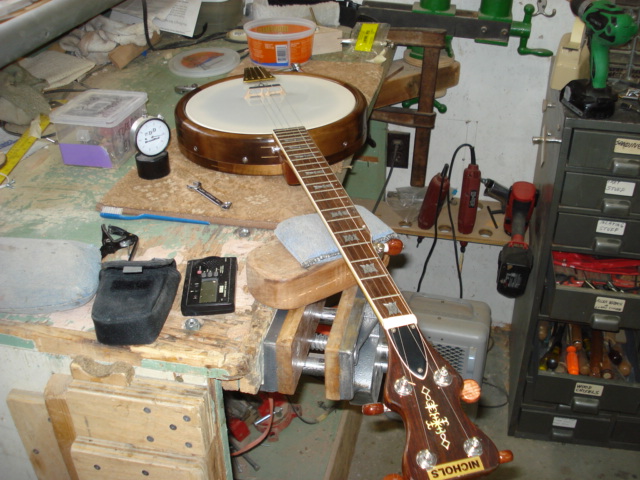
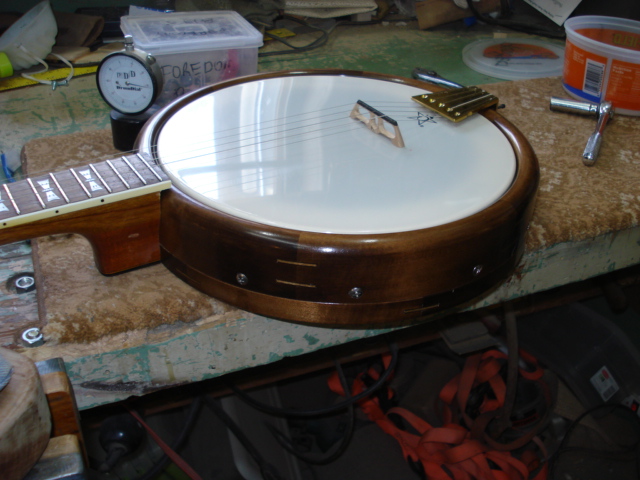
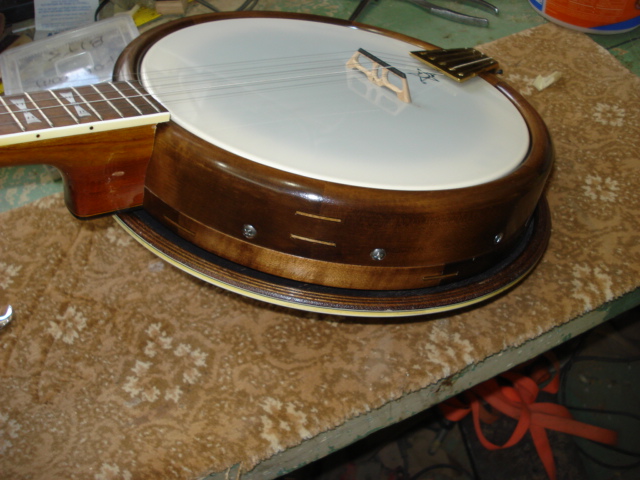
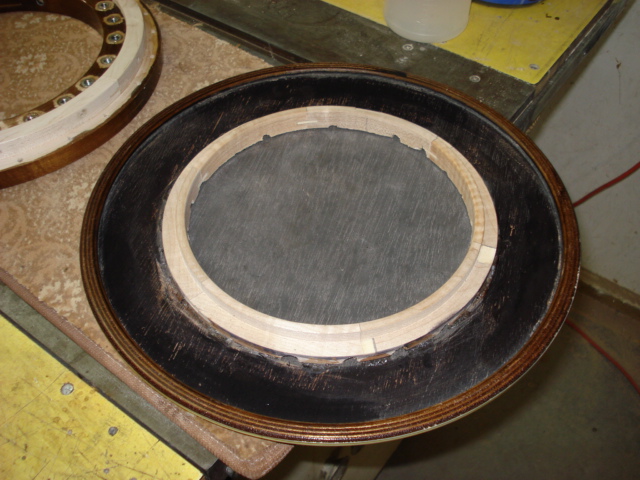
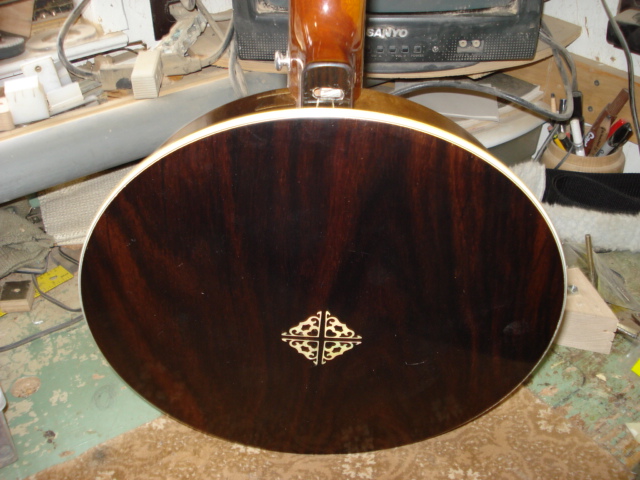
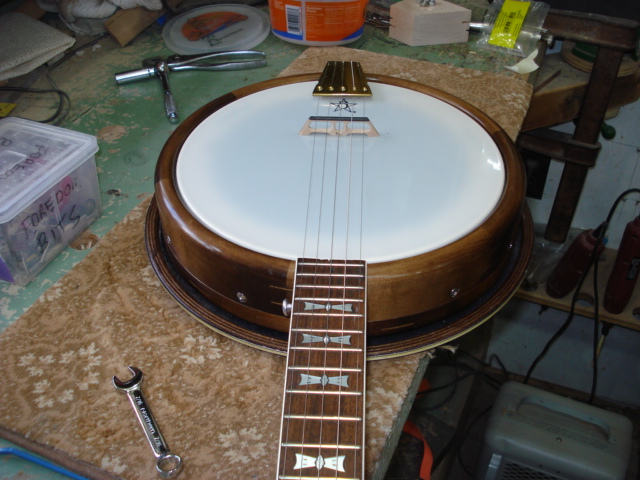
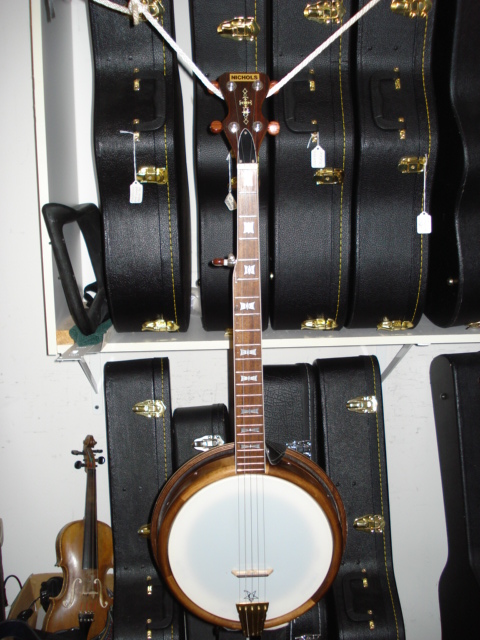
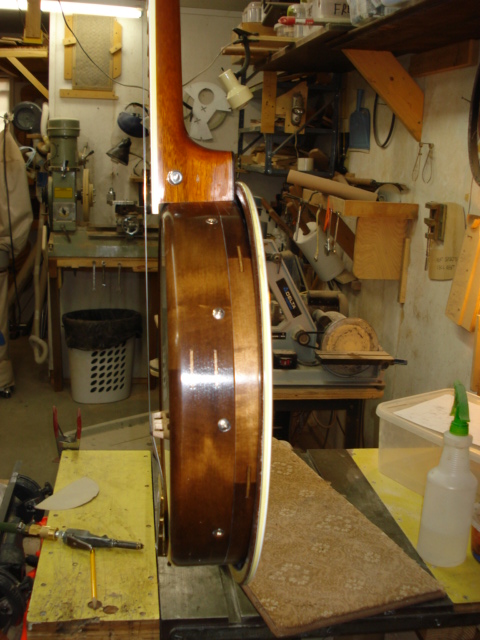
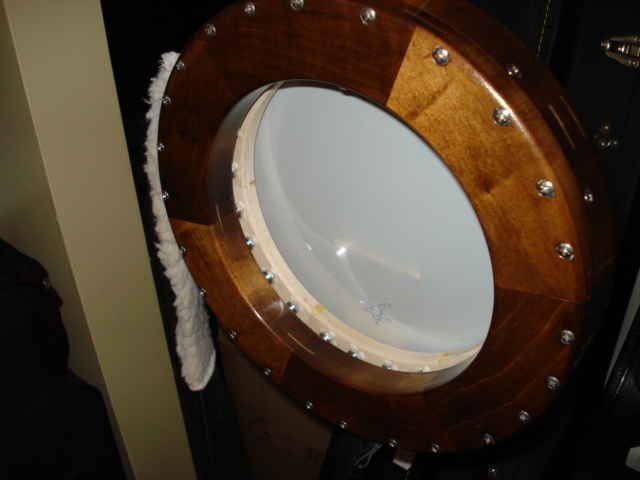
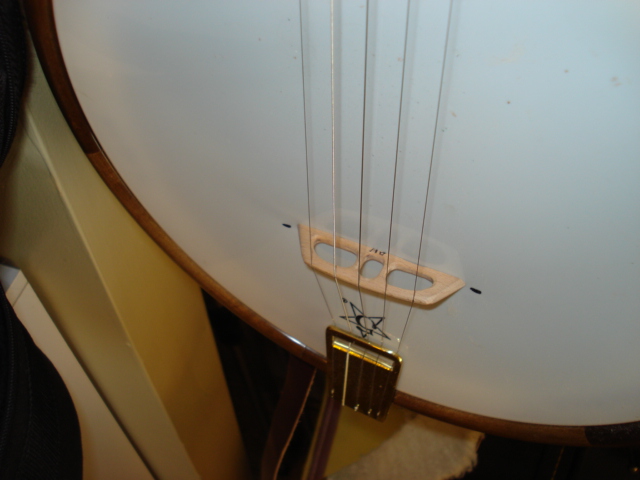
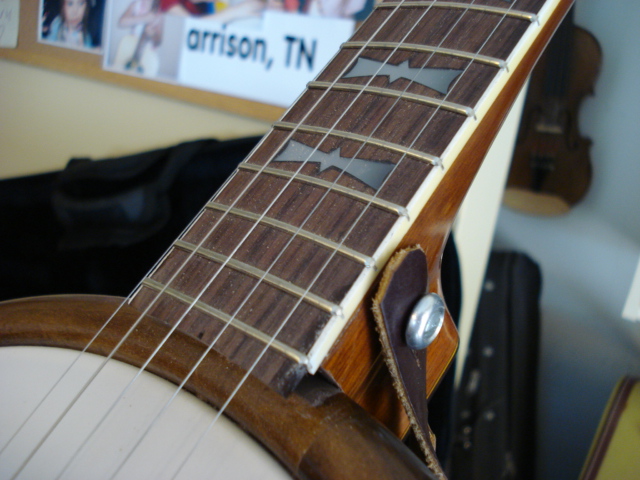
Be the first to comment on "Nichols Wooden Banjo- February, 2010"